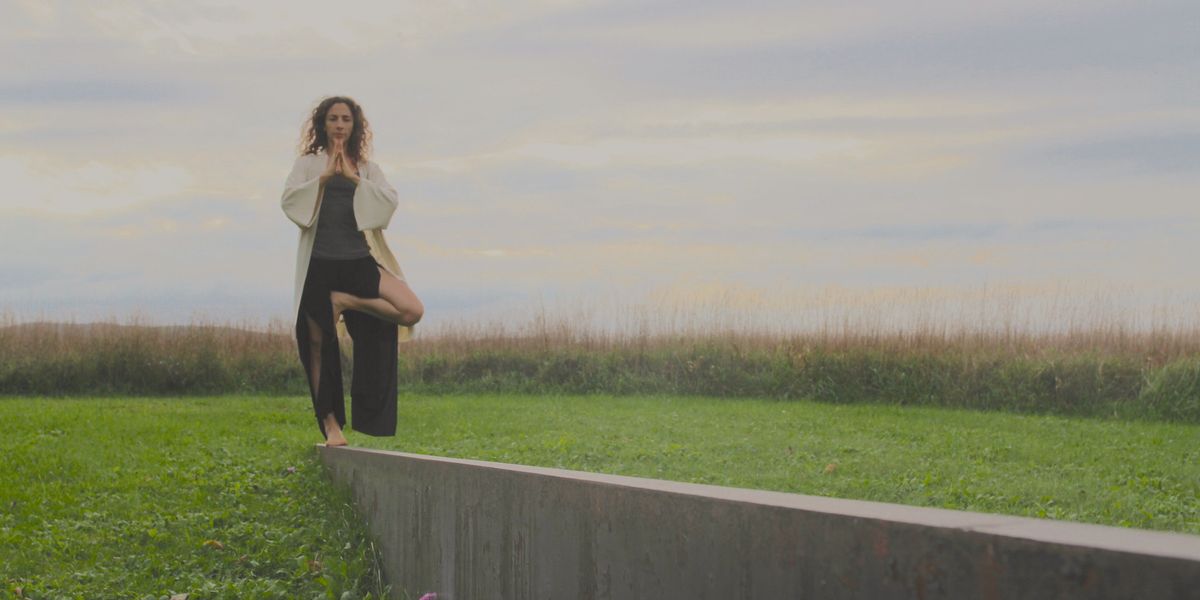5 Self-Soothing Exercises You Can Do to Calm Your Anxiety
Physical stillness can be one of the hardest things to master in dance. But stillness in the bigger sense—like when your career and life are on hold—goes against every dancers’ natural instincts.
“Dancers are less comfortable with stillness and change than most,” says TaraMarie Perri, founder and director of Perri Institute for Mind and Body and Mind Body Dancer. “Through daily discipline, we are trained to move through space and are attracted to forward momentum. Simply put, dancers are far more comfortable when they have a sense of control over the movements and when life is ‘in action.’ ”
To regain that sense of control, and soothe some of the anxiety most of us are feeling right now, it helps to do what we know best: Get back into our bodies. Certain movements and shapes can help ground us, calm our nervous system and bring us into the present.
Vrksasana (tree pose)
“One of the key lessons I teach through yoga is that stillness is not the absence of movement but the movement of presence,” says Perri.
She suggests dancers balance in tree pose on both sides for several breaths, staying longer than you think you can and calmly accepting any wobbles. Notice how your breath moves your rib cage, and how your ankles shift to bring you back to balance.
“If we practice balancing and breathing in tree pose,” she says, “we will notice all the little movements and changes present in the strength of stillness.”
Grounding the feet
Chicago dance/movement therapist Erica Hornthal advises dancers to home in on the present moment with this exercise:
Place your feet on the floor, paying attention to the shape of your feet and the texture of the floor, she says. “Be present to the sensations and movement of each toe. Move your foot in any way you need to and notice how that feels.” Then breathe in, and as you exhale, push your weight into your feet.
“Grounding allows us to connect our bodies to the present moment,” Hornthal explains. “When we are in the present we can’t fear or worry about the past or future.”
Virabhadrasana II (warrior II) sequence
Warrior II
is a grounding pose, Perri says. Start with your right foot front and left foot back in a strong warrior II stance. “Root your feet down and expand the wings of your arms to reach as far beyond your fingertips as possible,” says Perri. “Take a few breaths with the eyes calmly focused past your right fingers.”
On an inhale, bring your feet through a wide parallel and use your exhale to flip to the other side, facing your left foot. Stay for a few breaths on each side, and flow between the two several times.
“Think of this posture sequence as if you are surfing on waves,” Perri suggests.
Harnessing rhythm
Place your hand on your chest. Try tapping gently, then try rubbing gently. “Notice which rhythm feels more soothing,” says Hornthal. Take that rhythm and move it around the rest of your body, from head to toe.
“These are rhythms identified early in life, often through infancy,” she says. Even as adults, we can use them for positive self-soothing.
Extending your exhale
Perri points out that the fight-or-flight response is being triggered daily right now, heightening our anxiety. Regulating our breath can help balance out the nervous system with the “rest and repair” response. “When we exhale fully, our body has the chance to trigger the parasympathetic nervous system,” she says. This induces calm, which is key to a number of physiological processes that help the body recover, she adds.
A simple technique she recommends for calming anxiety is extending the length of your exhale. “Aim for your exhale to be twice as long as your inhale,” she says. “You can add a count to make it more focused. For example, inhale 2-3, exhale 2-3-4-5-6, and repeat. Eventually your breath will come to an equilibrium and you’ll notice your heart and mind are calmer, too.”





